|
This openwork embroidery takes its name from the Hardanger Fjord in Norway where white folk blouses and aprons were embroidered with opulent geometrical designs. Characteristic for Hardanger are the satin stitch blocks that outline and secure the edges of openwork sections that are filled with a grid overcast or darned bars.
|
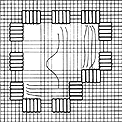
Basic System
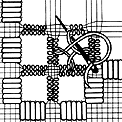 Loop stitch filler Loop stitch filler
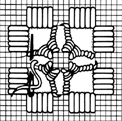
Maltese Cross

Picot
|
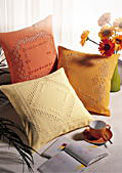
Needlework Ideas 3256/619
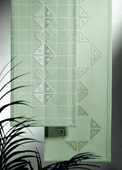 Needlework Ideas 5399/637 Hardanger Needlework Ideas 5399/637 Hardanger
|
|
The basic system is surprisingly simple, but a plethora of bar variations and filler stitches furnish rich ornamentation. You can also combine the openwork areas with different decorative borders and satin stitch motifs for a sheer endless variety of patterns.
Hardanger Fabric types:
You can use practically all smooth, even-weave needlework fabrics for Hardanger embroidery. It is imperative, however, that the warp and weft thread count is the same so that the openwork grid remains perfectly square.
Recommended fabrics:
3770 DAVOSA (18 threads/inch) is perfect for learning this technique, as the weave is particularly even and easy to count, making it ideal for practicing the 4-thread, Hardanger kloster block pattern. 3256 BELLANA (20 threads/inch) has become established as the most important Hardanger fabric. Let our wide colour range inspire you! 3711 ARIOSA (19 threads/inch) and 3409 FEIN-ARIOSA (21 threads/inch) are popular due to their unusual surface texture and lend interest to simpler, less ornate Hardanger patterns.
Advanced Hardanger aficionados tend to go for finer fabrics such as 3835 LUGANA (25 threads/inch) or even pure linen 3609 BELFAST (31 threads/inch). 3947 OSLO (22 thread pairs/inch) is actually the classic Hardanger fabric used in Scandinavia, a Panama weave with intersecting thread pairs.
Hardanger Embroidery thread :
Pearl cotton is generally used in a weight to match the hardanger fabric threads. The openwork is more effective if you use a finer thread for the bars and filler stitches than for the satin stitch outlines. The rule of thumb is: pearl cotton #3 and #5 for fabric with 18 threads/inch, #5 and #8 for 20 threads/inch, #8 and #12 or matching 4-ply yarns for 25 to 31 threads/inch. For Hardanger, thread and fabric colours are usually kept tone-on-tone. The satin stitch borders appear bolder when worked in a slightly lighter shade, the holes in the openwork grid look larger if the bars are worked in a slightly darker shade than the fabric.
|

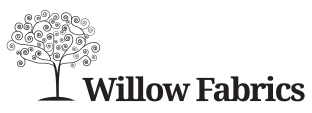

 Loop stitch filler
Loop stitch filler


 Needlework Ideas 5399/637 Hardanger
Needlework Ideas 5399/637 Hardanger